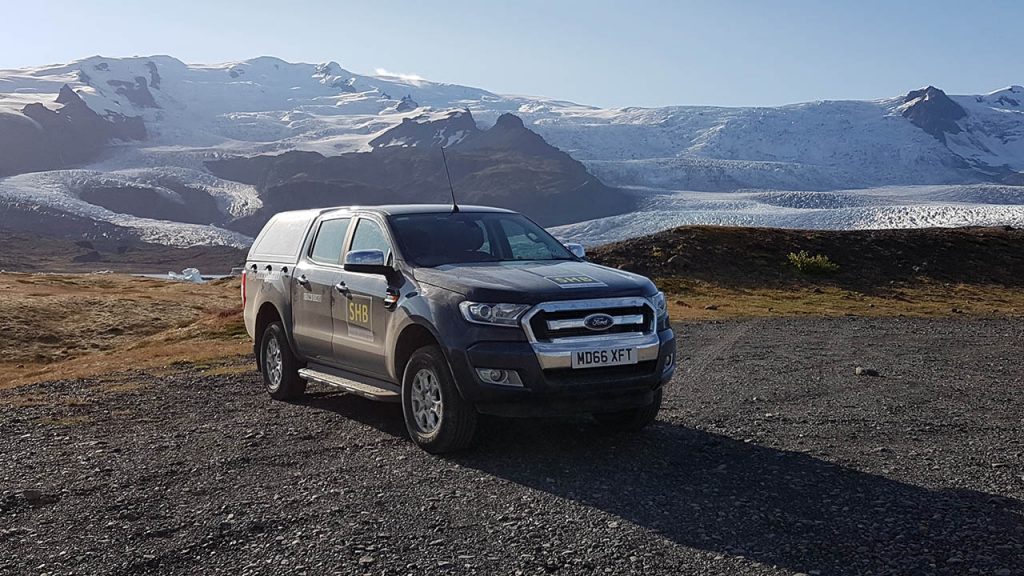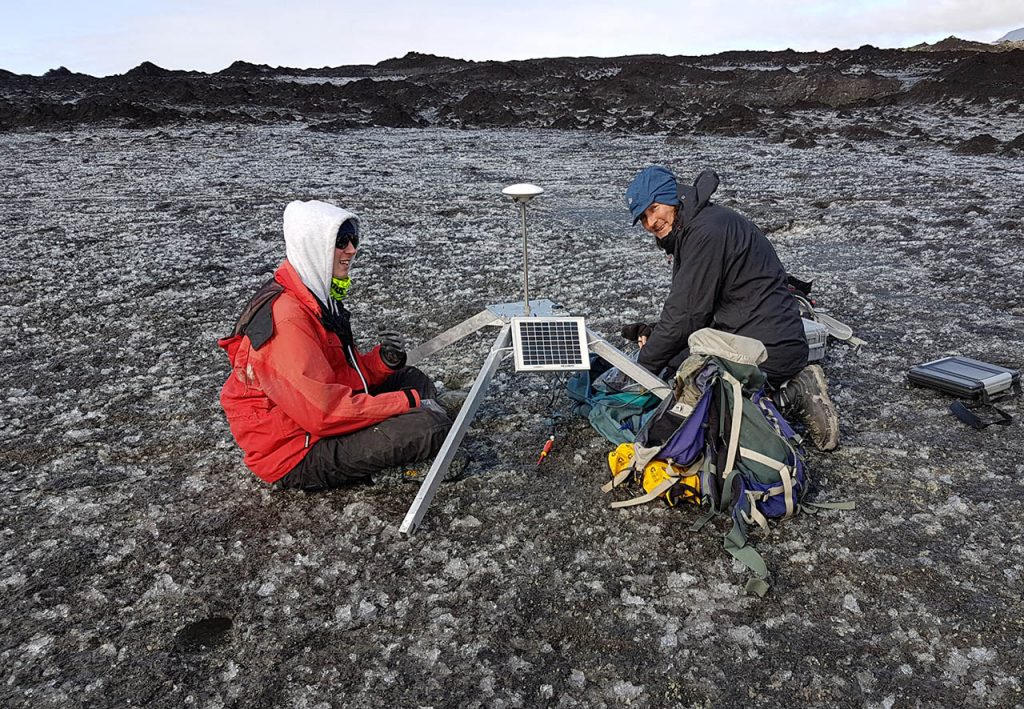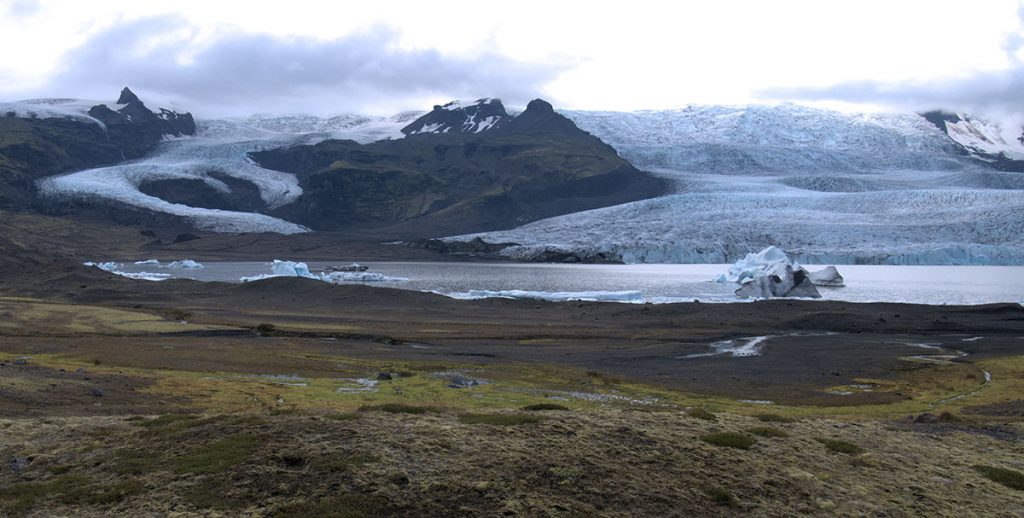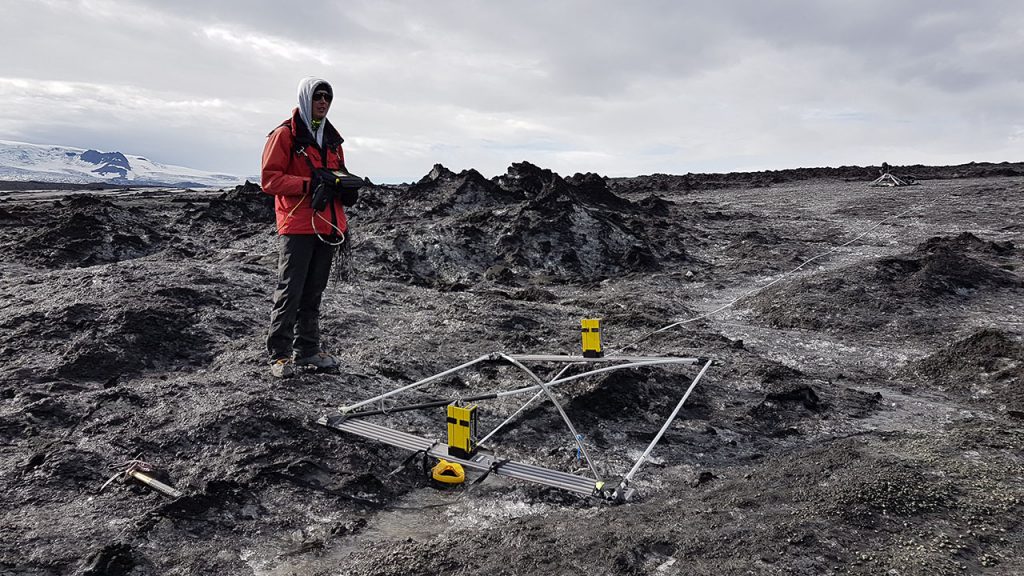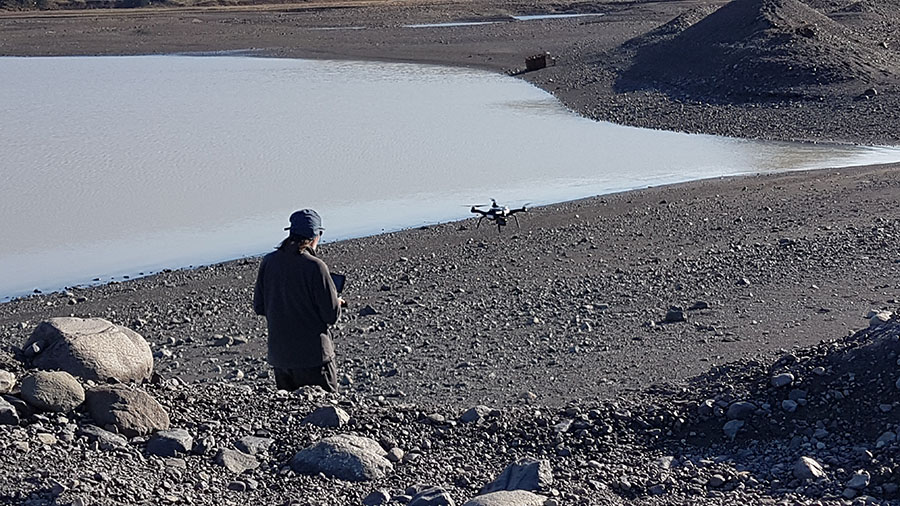In 2017 we carried out fieldwork in Iceland to test/install the “ice-tracker” – a new accurate but lower cost GPS system to monitor ice flow. We were quite lucky with the weather.
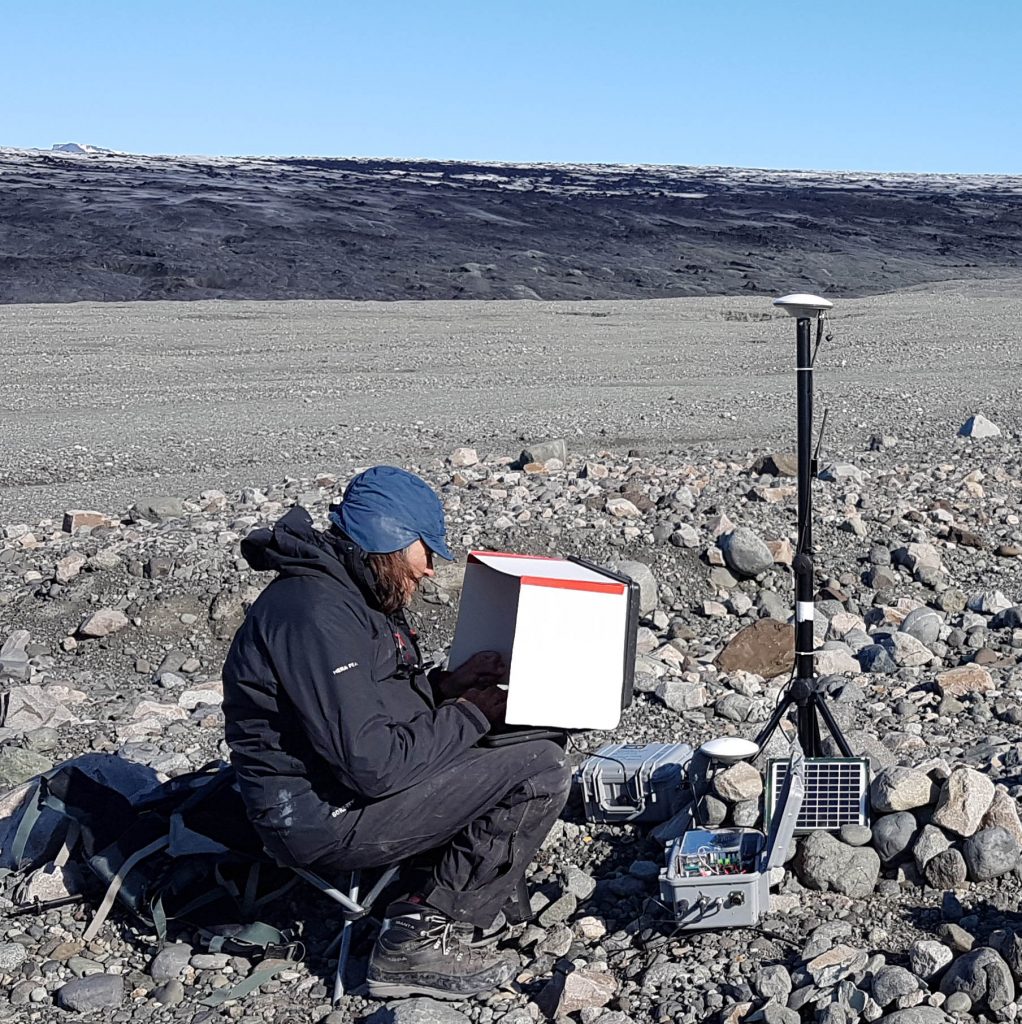
The Breida base station. Here you can see the traditional Glacsweb laptop peli case with sun-shield in action. We used normal loudspeaker tripods for the base stations.
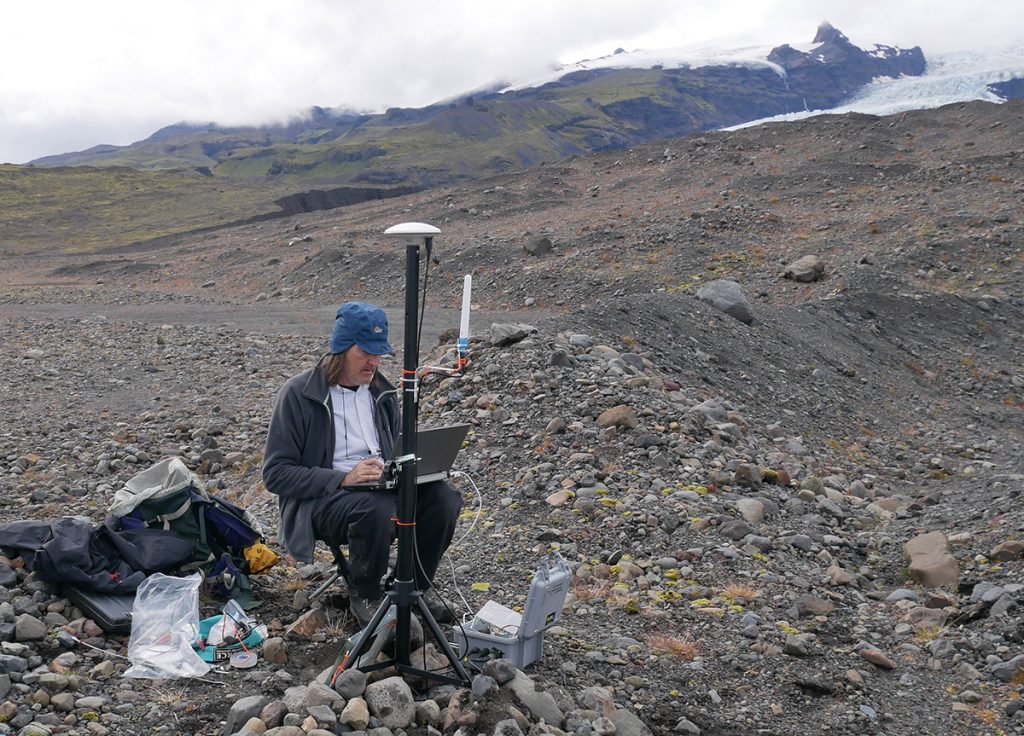
the dGPS base station installed on a moraine close to the Fjallsjokull glacier. We used speaker stands burried in rocks to support the GPS antenna (top) and hold its 2.4GHz radio antenna (white stick)
Video from Quadcopter available on Vimeo
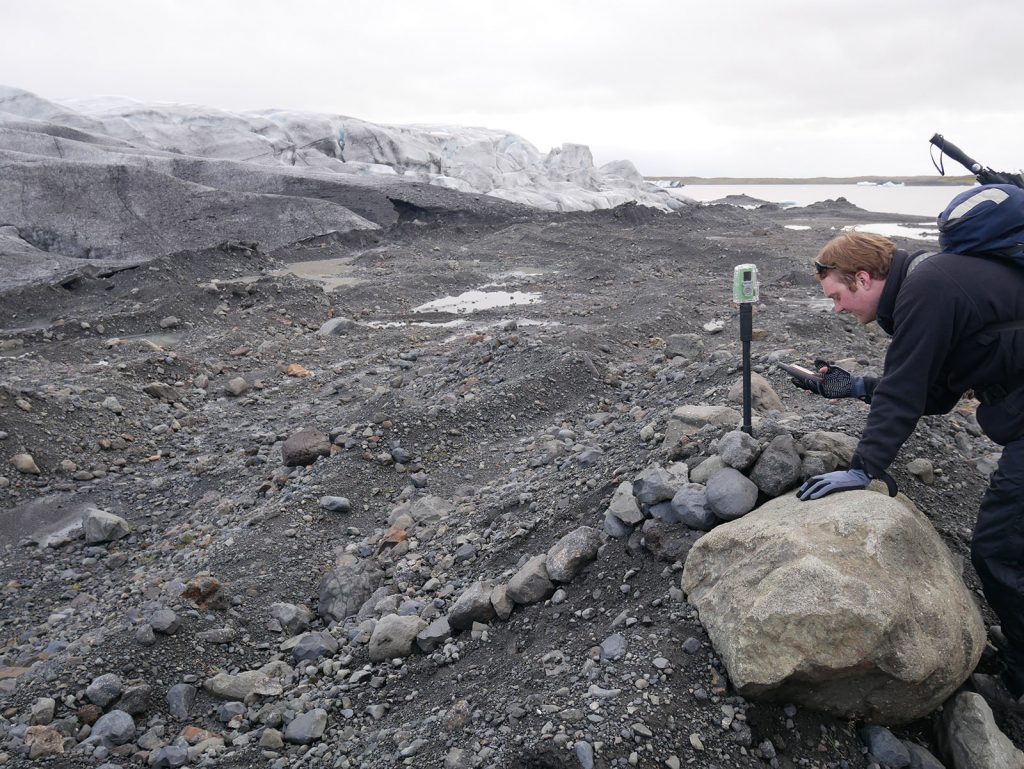
In a follow-up trip with Philip Basford we installed a Brinno timelapse camera looking towards the glacier margin. We look forward to gettting the images in 2018!

We hoped our carefully worked out setup would protect the antennas and provide us with plenty of data.. which of course it did!
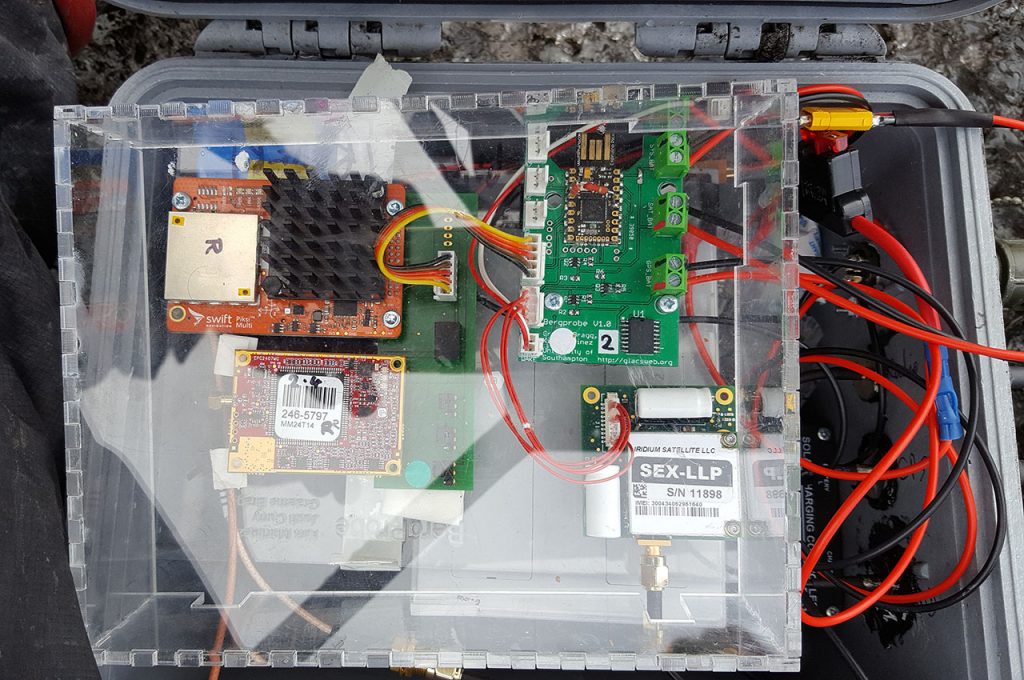
We covered our electronics inside the Peli case with laser-cut plastic. A trick we learnt in Scotland to protect it from rain when we woerked on it. The green PCB is was made by Graeme Bragg and hosted the small Pico computer, RTC and power switches. The Piksi Multi with its black heatsink is top-left with its radio modem below.

